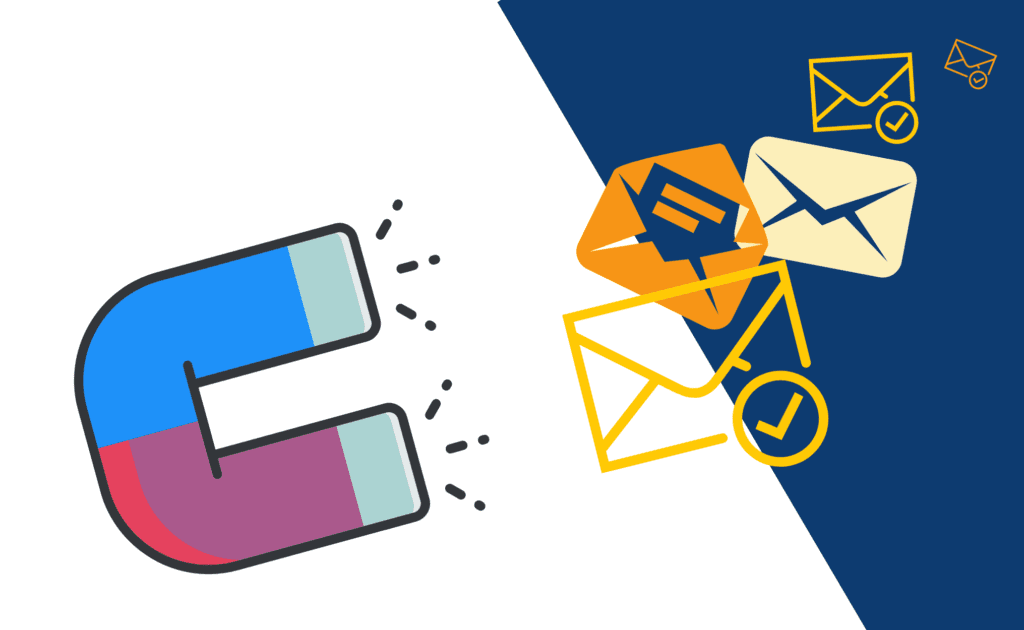Benchmarks for Email Conversion Rates


Email conversion rate benchmarks aren't easy to find. Especially if you're looking for industry-specific benchmarks.
Email marketing statistics of average users are usually kept under wraps, even though we could all benefit from learning the best practices from one another.
Let's go over the basic terms and benchmarks that are available, so you have something to compare your result against!
Email Marketing Campaigns & Their Average Conversion Rate
It can be tricky to judge the success of the conversion rate for email marketing, as they vary greatly.
Variables to take into consideration include:
- Industry
- Quality of your emails
- Number of email recipients
- Time spent on your marketing campaign
- Money spent on email campaigns
- Length of sales cycle
- Mobile device usage
Despite changes in customer behaviors in recent years, there’s no denying that email marketing remains one of the most effective techniques. But what are the measures of a “successful” campaign?
Today we’ll take a look at some of the benchmarks for a good conversion rate for email marketing campaigns.
The statistics we’ve used below come from MailChimp’s annual email marketing survey, and the full list of benchmarks can be found here.
Open Rate
Open rates refer to how many percentage of email recipients actually opened the email.
This is your first indicator of success, and as mentioned above, this can vary by industry.
However, open rate doesn't tell you the whole truth anymore, as data privacy changes (Apple's update and GDPR) have affected the reliability of this metric – heavily.

Some platforms even count hovering your mouse over the email to see a preview as an "open". So beware of this!
Nevertheless, let's look at some industry-specific benchmarks.
Email Open Rate by Industry
Email marketing stats vary greatly.
For example, for those promoting products to do with hobbies, you can expect email open rates of 27,74%, while beauty and personal care only see an open rate of around 16,65%.
This is because people are far more engaged in their hobbies than they are with other product promotions.
Other interesting open rates:
- Business and finance: 21,56%
- E-commerce: 15,68%
- Marketing and advertising: 17,38%
- Real estate 19,17%
The average across all industries comes to 21,33%.
Judge your success on how engaged your user base is. Is there anything you can do to get them more engaged?
Let's go over a few ways to improve your average open rate.
Social Proof in Email Campaigns
If you're looking to reach an above average open rate in your industry, we recommend using social proof in your email campaign. However, this works the best for segmented campaigns. Use reviews and testimonials from the specific industry you're sending the campaign to.
Pay Attention to Subject Line
Personalized emails usually perform better! Try and use the customer’s name in the email subject line and optimize the title to get them over the first hurdle and open the email.
Be as specific as you can on what the email contains. If you're offering 20% off, state that in the subject line.
Click Rate
Click through rate refers to how many percent of the recipients who opened your email clicked on something on it.
This is where you’ll see the percentages fall off dramatically, and you realize just how difficult it is to get people to actually click on offers and engage with your campaign!
The average click rate is only 2.62%, so if you’re landing anywhere around here this should be considered good.
Having a lower click rate doesn't necessarily mean that your email is not of high quality. The click rate is dependent, however, on the email deliverability rate.
Click through rates by industry:
- Business and finance: 2,72%
- E-commerce: 2,01%
- Marketing and advertising: 2,04%
- Real estate 1,77%
Ways to Improve Click Rate
To improve the click rate, you might want to think about making your emails short and snappy. People are much more likely to read a short paragraph than reams of text.
Make sure you’re highlighting the value of your offer too. Don’t try to hard sell, but rather emphasize what benefits the customer will get by signing up to your deal.
In other words: Create relevant content for your target audience. This includes using reviews from existing happy customers.
Hard Bounce Rate
This is the percentage of emails that failed to reach the recipient. If your hard bounce rate is high, it means that you're getting flagged by the spam filters.
This usually means your marketing list is out of date and that email address no longer exists. Most people keep the same email address for years, so the hard bounce rate averages at 0.40%.
However, make sure you delete every hard bounce address from your contact list. If your email filtering software picks up too many hard bounces from your company, there’s a chance you could get marked out for spam. So keep that list up to date!
Unsubscribe Rate
This is the percentage of customers who unsubscribed after receiving your marketing communication. The average rate across all industries is 0.26%, so if you start to see your rate increase, it's likely a sign that you’re doing something wrong.
Review your marketing emails and see what might be annoying customers and forcing them to unsubscribe. You can also segment your market and offer more targeted emails to customers, this way they’ll only get product offers they might be interested in.
Email Conversion Rates Aren't Linear
Remember, the benchmarks are a little different depending on the industry.
Before you start to worry you should compare your results to your industry average.
Once you’ve got some accurate benchmarks on the topics we’ve mentioned, you can then take targeted action to improve areas you might be weak in.
Keep an eye out for your website conversion rate as well. You should keep it above the average!